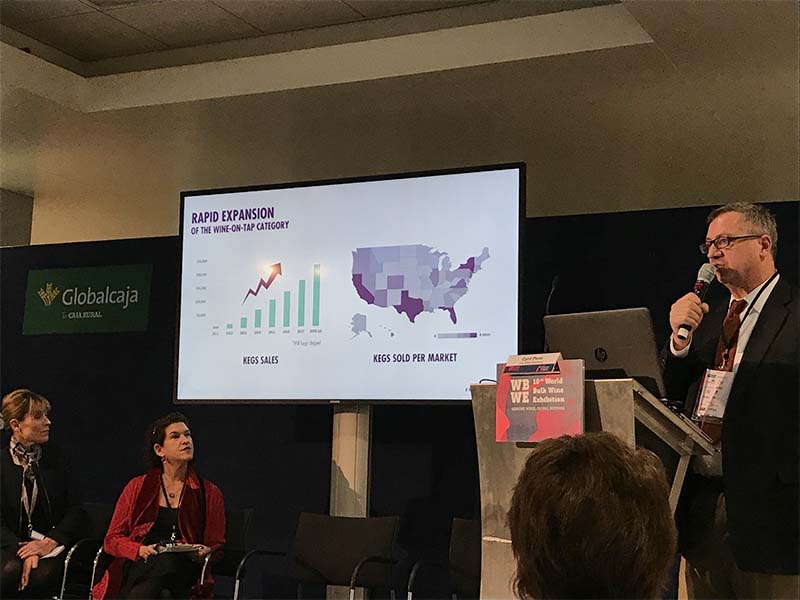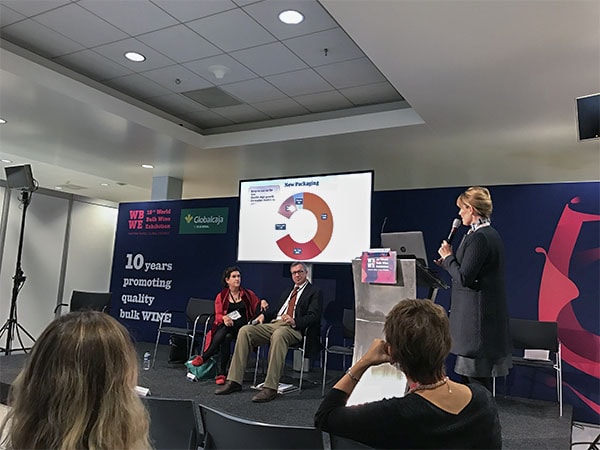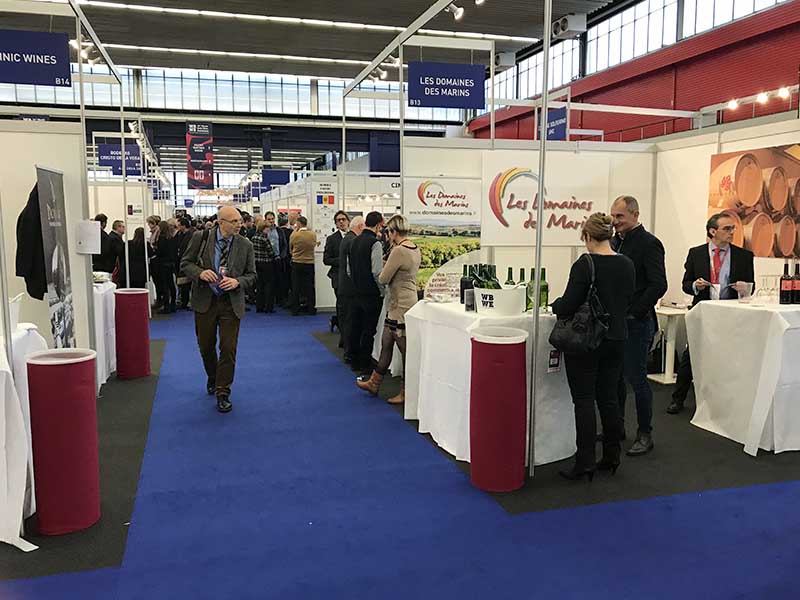The wine industry is continually changing and it’s important for wine suppliers to adapt in order to stay relevant to consumers. What are the trends they should be most aware of as we head into 2019?
Dimensional Insight’s European team recently attended the World Bulk Wine Exhibition in Amsterdam. During the exhibition, we attended a round table of wine industry experts including Cyril Penn, Deborah Parker Wong, and Liza Zimmerman. At this event, these experts spoke about the latest trends in wine consumption in the United States and shared their insights for producers who are considering to export bulk to the U.S.
The bulk wine industry
The bulk wine market is integral to the overall wine industry in the United States. Bulk wine allows wine buyers to work directly with producers and to blend and create wines with a consistent quality.
Within the U.S., there are two wine industries: a big one and a small one. Six wineries in the United States are doing about 80% of the volume, with 10,000 small wineries chasing the other 20%. It’s only a handful of companies that are actually buying bulk wine. Why? Bulk wine is a commodity, where its value lies within quality, price, and flexibility.
Headwinds and opportunities
At the moment, the United States wine market is slowing down. There are some headwinds, such as more competition from spirits, all sorts of new innovations such as hard seltzers, and the legalization of marijuana.
At the same time, there is an opportunity for international wine producers to bring more bulk wine into the American market. An interesting development in that regard is that many California Central Valley wine producers are increasingly switching to other crops, such as almonds. These crops are generating more revenue than wine. Penn thinks that if this acreage of vineyards in California is continuing to come out of the market, that void is very likely going to be filled with wine from other places in the world.
Another interesting development for bulk wine producers is the fact that the private label wine market in the United States has nearly doubled in size in the last 10 years. This market is likely going to continue to grow with the expansion of supermarkets such as Aldi, where more than 90% of what they sell is private label.
New trends in supply for bulk wine
In the last five years, margins have been under pressure. The market requires innovation, and wine producers can’t exclusively think about the “750s.” There’s now room for new players in this market who can shake things up. So what keeps wine exciting?
Bag-in-the-box, cans, and kegs are taking off rapidly in the U.S. One of the biggest players in the market segment is Free Flow Wines, which provides “wine on tap.” Wine producers can bring their wine to them, have the wine filled in kegs, then Free Flow will distribute the wine and get the kegs back. This is an interesting opportunity for bulk wine exporters – especially for more expensive wines – that you otherwise wouldn’t be able to sell in a wine by the glass program.
Parker Wong mentioned that because consumers are becoming more health conscious, low alcohol products are a macro trend. One of the new developments in the U.S. market in this regard is the appearance of new low-alcohol wine-based alternative beverage alcohol products, which are distributed through the beer channel.
Advice for producers who want to enter the U.S. market
The U.S wine market is conservative and it’s not easy to enter the market. Zimmerman had 10 interesting best practices for getting bulk wine into the United States.
- Know the players: this includes companies such as Treasury, Constellation, Gallo.
- Don’t forget the private label: a lot of retailers, such as Whole Foods and Aldi, sell a lot of private-label wines.
- Go to top trade shows.
- Get your wine rated by entering into wine competitions. They can help to boost sales and win trust, by demonstrating that the wine is of a high quality.
- You need a lot of feet on the ground: you need a quality customer service who understands how to do business in the rapidly changing American market.
- Maintain consistent quality.
- Be creative with label design.
- Think closely about new packaging: cans are great for sports events. And kegs and and bag in the box concepts are also growing rapidly.
- Don’t be afraid to approach the smaller importers.
- Continue to differentiate your company as you grow your brands in the United States.
Use data to give you a competitive advantage
A final piece of advice, which was given by multiple speakers at the World Bulk Wine Exhibition, is to use data to support your market entry initiatives. There is a lot of data on wine consumption available through various services. Insights from data can help you to build a business case and to target the right market segments.
Related articles
- “The Future of Wine Has Changed” … But in What Direction?
- How Wine Producers Are Solving Production Challenges with Technology
- How Analytics Can Help Wineries Improve the Tasting Room Experience
- New Trends for Suppliers in the Bulk Wine Industry - December 20, 2018








